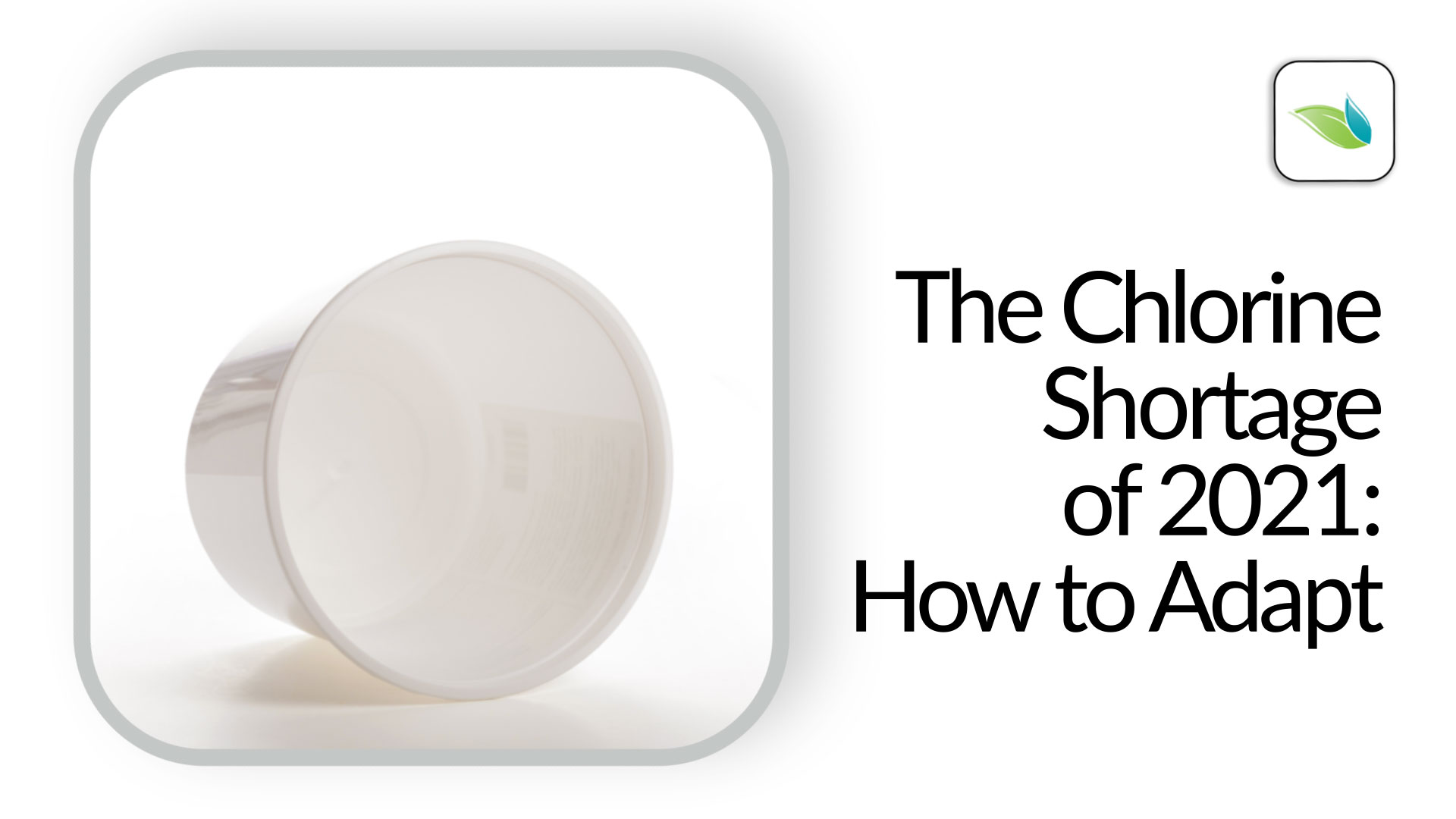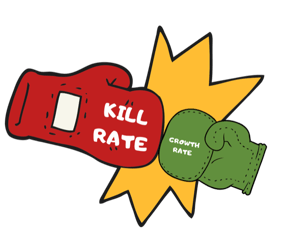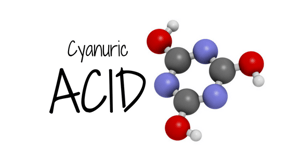The Chlorine Shortage of 2021: How to Adapt

The chlorine shortage that we have been talking about for months is now national news. Panic buying has already begun. Even if you're willing to pay more for chlorine, you may not be able to get enough of it this summer. Let's discuss how you can adapt.
Covered in this article:
- Why is there a chlorine shortage?
- What does chlorine do in a pool?
- Growth and reproduction
- Oxidant demand
- Chlorine and CYA
- Conclusion
Why is there a chlorine shortage?
Just like any other shortage, the chlorine shortage is the result of increased demand and reduced supply. First, the demand for chlorine in many industries is at a record high. Thanks to COVID-19, household cleaning products are selling like crazy. Food processing and other manufacturing also need chlorine. Then there are swimming pools.
As for supply, chlorine manufacturers were at total capacity trying to keep up with the COVID-19 pandemic. Then a Hurricane destroyed a large chlorine factory in the United States. It was a one-two punch that has severely limited chlorine availability–specifically Trichlor tabs.
What does chlorine do in a pool?
How much chlorine does a typical residential pool need? How about a standard commercial pool? How much chlorine does a pool consume? It all comes down to chlorine demand. There are two main categories of chlorine demand: the living contaminant growth and reproduction and the non-living oxidant demand. If we are to minimize chlorine use in our pools, we must address these factors.
Growth and reproduction
 A very slim percentage of contaminants in water are harmful bacteria/germs/viruses. The amount of germs in water is tiny compared to the oxidant demand, which we will discuss in a moment. The downside is it does not take a lot of harmful germs to cause a recreational water illness (RWI). And the primary reason we maintain a chlorine residual in our pools is to disinfect and keep our water safe. So while germs/viruses themselves are tiny, they are the number one priority.
A very slim percentage of contaminants in water are harmful bacteria/germs/viruses. The amount of germs in water is tiny compared to the oxidant demand, which we will discuss in a moment. The downside is it does not take a lot of harmful germs to cause a recreational water illness (RWI). And the primary reason we maintain a chlorine residual in our pools is to disinfect and keep our water safe. So while germs/viruses themselves are tiny, they are the number one priority.
The primary living contaminants that consume chlorine are algae. Algae come in thousands of varieties. Given the proper nutrients and conditions in water, algae can reproduce rapidly. Chlorine must compete with this growth and reproduction rate. When the growth rate meets or exceeds the kill rate of your chlorine, you will get an outbreak. We must keep our chlorine faster and stronger than algae's growth rate. We will discuss CYA and chlorine soon, but for now, let's stay focused on keeping the growth rate as slow as possible. To help chlorine efficiency in this way, keep phosphate levels to a minimum, ideally below 500 ppb. This is the core of our Third Pillar.
Oxidant demand
The vast majority of contaminants in swimming pools are non-living oxidants. These cannot be sanitized or disinfected because there is nothing to kill...these contaminants must be oxidized. Oxidation, as we covered at length in Orenda Academy: Four Pillars is how chlorine destroys non-living contaminants. Oxidation is essentially an electron transfer. The oxidizer (chlorine) takes electrons from the oxidant, and because electrons have a negative charge (e-), they reduce chlorine to chloride. Read more about oxidation and reduction here (ORP).
There are three main categories of oxidants present in swimming pool water:
- Metals
- Nitrogen compounds (ammonia, urea, etc.)
- Non-living organics (carbon-based) bather waste
Metals like iron, copper, and manganese usually make up a tiny percentage of oxidant demand in the water. The great lakes region of the United States is notorious for high iron levels in tap water. Still, the levels are relatively low compared to the other oxidant categories. Nitrogen compounds like ammonia and urea are hopefully a small percentage of oxidant demand in your water too. The primary sources are urine, which is loaded with urea, and cleaning products that contain ammonia, which get into the pool somehow (usually deck cleaners). Unfortunately, there is no shortcut to removing nitrogen compounds from water; chlorine must combine with them and oxidize them. This is where the term combined chlorine comes from. You may recognize this as the breakpoint chlorination process.
Related: How to reduce combined chlorine
Finally, most of the oxidant demand is non-living organics and oils. Think of bather waste like body oils, sweat, saliva, and mucus...but also bather products like lotion, deodorant, tanning oils, and sunscreen. These compounds make up the majority of chlorine demand in a swimming pool. It takes a lot of chlorine to remove things like sunscreen and oils from your water, and chlorine was not made for such a task in the first place. Chlorine is made to kill, not de-grease.
To reduce chlorine demand, supplement chlorine against non-living organics.
Our Second Pillar is about giving your chlorine some support against the oxidants it wasn't designed to eliminate.
You can use enzymes, which break down and digest non-living organics and hold a residual throughout the entire pool system. You can also use a secondary oxidation system like ozone or AOP. Both of these systems can destroy oxidants easier than chlorine can, but their downside is they are point-of-contact without a residual.
Chlorine and cyanuric acid (CYA)
 We mentioned earlier that sanitization is a battle between the killing rate of your sanitizer (chlorine + secondary sanitizers) and the reproduction rate of the contaminant. Fewer phosphates can minimize the reproduction rate. As for chlorine efficiency and speed, we need to think about cyanuric acid (CYA). In water with CYA, the ratio of free chlorine to CYA determines chlorine's speed. The higher that ratio, the faster your chlorine...but if you have too much CYA relative to your free chlorine, you can suffer from chlorine overstabilization, and killing speed is too slow to keep up. Read more about CYA in our other articles here:
We mentioned earlier that sanitization is a battle between the killing rate of your sanitizer (chlorine + secondary sanitizers) and the reproduction rate of the contaminant. Fewer phosphates can minimize the reproduction rate. As for chlorine efficiency and speed, we need to think about cyanuric acid (CYA). In water with CYA, the ratio of free chlorine to CYA determines chlorine's speed. The higher that ratio, the faster your chlorine...but if you have too much CYA relative to your free chlorine, you can suffer from chlorine overstabilization, and killing speed is too slow to keep up. Read more about CYA in our other articles here:
We recommend keeping your CYA between 30-50 ppm. You can go higher to extend the life of your chlorine longer (by slowing it down), but that is a calculated risk. If you choose to exceed 50 ppm, we recommend also supplementing chlorine, as mentioned earlier, because chlorine will be slower.
Conclusion
The chlorine shortage is here, and we all must adapt. Fortunately, by supplementing chlorine properly and keeping our CYA under control, we can optimize chlorine efficiency. Let's not rely on chlorine for every contaminant because most contaminants can be addressed in a better, more proactive way. For more info, give our Orenda Program a try.
